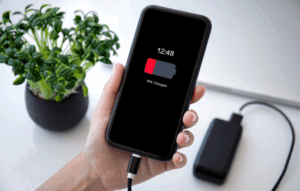Advertisements
Why learn piano in the digital age
Playing the piano has always been a symbol of elegance, artistic sensitivity, and mental discipline. However, for decades it was reserved for those who could afford private lessons or attend conservatories.
With the advent of smartphones and educational apps, that barrier has been broken: today, anyone with a mobile device can access professional-quality lessons, receive immediate feedback, and progress at their own pace.
Advertisements
Learning piano through an app is not only practical; it is also motivating thanks to the gamification, personalized study plans, and the ability to practice 24/7 without having to rely on rigid schedules. Additionally, many apps offer song libraries ranging from Beethoven classics to Billie Eilish hits, which keeps students motivated.
Advertisements
See also
- Radio Amador App
- Radio app on cell phone
- 5 natural foods to regulate blood sugar
- Turn your phone into a DJ mixer with these apps
- Monitor WhatsApp and Track Your Child's Cell Phone
Advantages of using apps to study piano
- Total flexibility of schedules
You can practice for five minutes between meetings or for a full hour in the evening; the app adapts to your schedule. - Learning on demand
You skip topics you've already mastered, repeat the ones you struggle with, and move on when you're truly ready. - Instant feedback
By using your phone's microphone or a MIDI connection, the apps detect whether you're hitting the correct key, keeping the rhythm, and whether your fingering is correct. - Reduced cost
An annual subscription typically costs less than a couple of months of in-person classes; there are even free plans with limited access. - Variety of styles and levels
From absolute beginners who want to learn “Twinkle, Twinkle, Little Star” to intermediate players who want to improvise over jazz scales. - Constant updates
New songs, weekly challenges, and additional features arrive frequently, keeping the content fresh.
How modern piano apps work
1. Audio and MIDI recognition
When you play an acoustic or digital keyboard, the phone's microphone "listens" to the notes. Recognition algorithms compare the captured sound with the score displayed on the screen.
If you have a keyboard with a USB/MIDI output, the app can receive exact velocity and duration data for each note, offering an even more precise analysis.
2. Progress tracking
The apps track your activity, measure your success and mistakes, and generate statistics on your progress in pace, dynamics, and daily consistency.
3. Gamification and rewards
Achievements, virtual currencies, badges, and leaderboards encourage daily practice. Positive reinforcement—similar to that found in video games—helps maintain long-term motivation.
4. Artificial intelligence and adaptive plans
After initial testing, the AI determines your level and designs a training path tailored to your performance. If you progress quickly, the lessons become more challenging; if you encounter obstacles, the system slows your progress and reinforces concepts.




